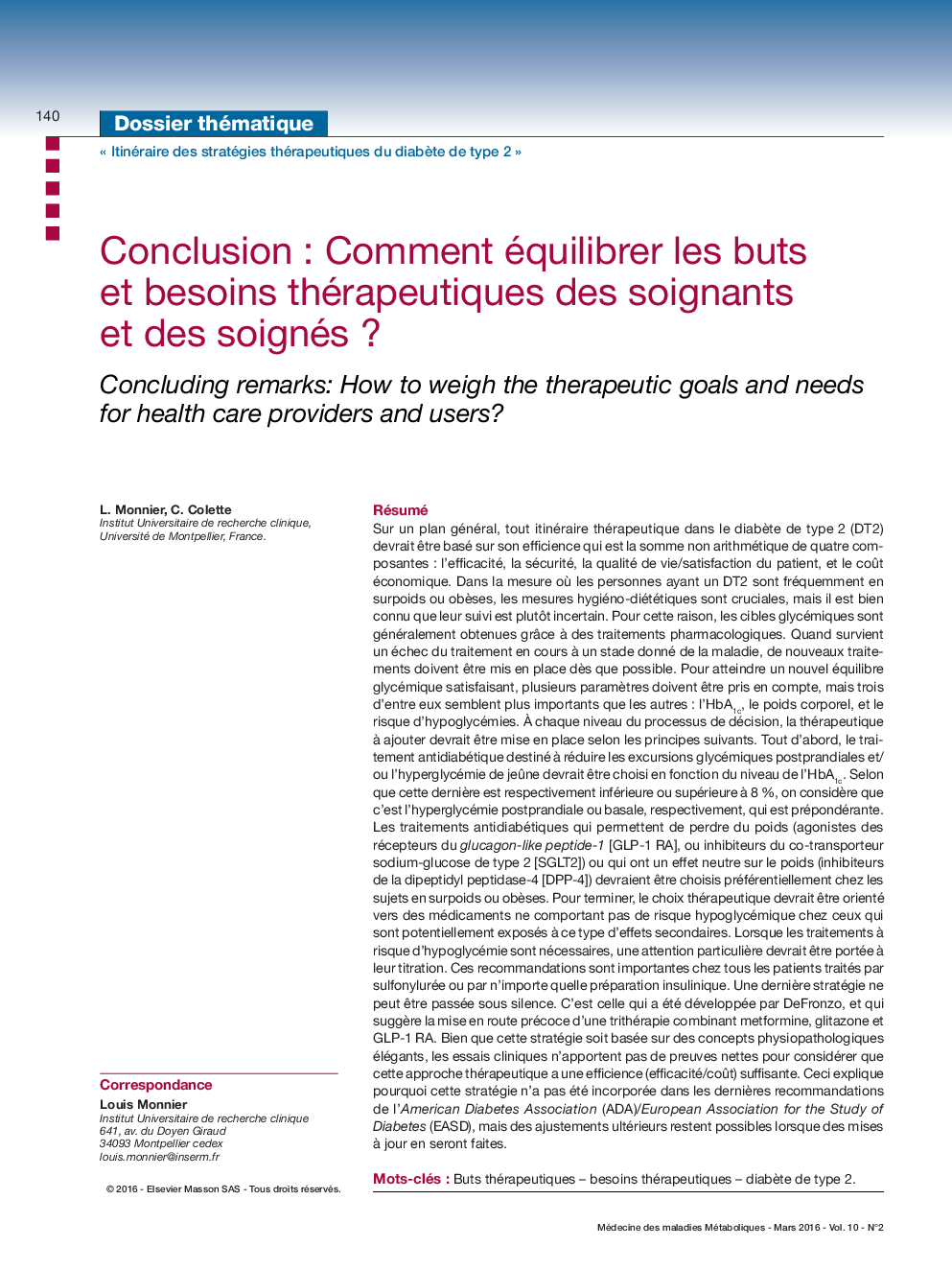| کد مقاله | کد نشریه | سال انتشار | مقاله انگلیسی | نسخه تمام متن |
|---|---|---|---|---|
| 3274179 | 1208454 | 2016 | 7 صفحه PDF | دانلود رایگان |
عنوان انگلیسی مقاله ISI
Conclusion : Comment équilibrer les buts et besoins thérapeutiques des soignants et des soignés ?
دانلود مقاله + سفارش ترجمه
دانلود مقاله ISI انگلیسی
رایگان برای ایرانیان
کلمات کلیدی
موضوعات مرتبط
علوم پزشکی و سلامت
پزشکی و دندانپزشکی
غدد درون ریز، دیابت و متابولیسم
پیش نمایش صفحه اول مقاله

چکیده انگلیسی
From a general point of view, any therapeutic itinerary in type 2 diabetes (T2D) should be based on its efficiency, which is the non-arithmetic sum of four components: the efficacy, safety, patient's quality of life/satisfaction, and the economic costs. As persons with T2D are frequently overweight or obese, lifestyle interventions are crucial but it is well recognized that the patient's adherence to diet is rather uncertain. As a consequence, glycemic targets are generally attained by using pharmacological therapies. When a secondary failure to the ongoing treatment occurs at a given stage of the disease, new treatments should be implemented without undue delay. To achieve a new satisfactory blood glucose control, several parameters should be considered but three of them (the HbA1c, body weight, and the risk for hypoglycemic events) require particular attention. At any tier of the decision making process, the add-on therapy should be initiated according to the following principles. The antidiabetic treatment aimed at reducing either postmeal glucose excursions or fasting glucose should be chosen according to whether HbA1c levels are chronically below (preponderance of postprandial hyperglycemia) or above (preponderance of basal hyperglycemia) 8%, respectively. Antidiabetic treatments that either permit to loose weight (GLP-1 receptor agonists, or SGLT2 inhibitors) or exert neutral effects on body weight (DPP-4 inhibitors) should be preferentially chosen in overweight and obese subjects. Finally the therapeutic decision making process should be oriented towards drugs not at risk of hypoglycemic episodes in those who are potentially prone to such adverse events. When treatments at risk of hypoglycemia are necessary, particular attention should be paid to their titration. These recommendations are of particular importance in patients treated with sulfonylureas or any insulin preparation. Another strategy that cannot be neglected was described by DeFronzo who suggested the early implementation of a triple therapy combining metformin, pioglitazone, and exenatide. Albeit this strategy is based on elegant pathophysiological concepts, there is at present no incontrovertible evidence for considering that the efficiency (efficacy/cost) of this therapeutic approach is sufficiently validated. This explains why this strategy has not been included in the latest position statement of the ADA/EASD. However there still remains that further adjustments might occur when the current recommendations will be revisited.
ناشر
Database: Elsevier - ScienceDirect (ساینس دایرکت)
Journal: Médecine des Maladies Métaboliques - Volume 10, Issue 2, March 2016, Pages 140-146
Journal: Médecine des Maladies Métaboliques - Volume 10, Issue 2, March 2016, Pages 140-146
نویسندگان
L. Monnier, C. Colette,